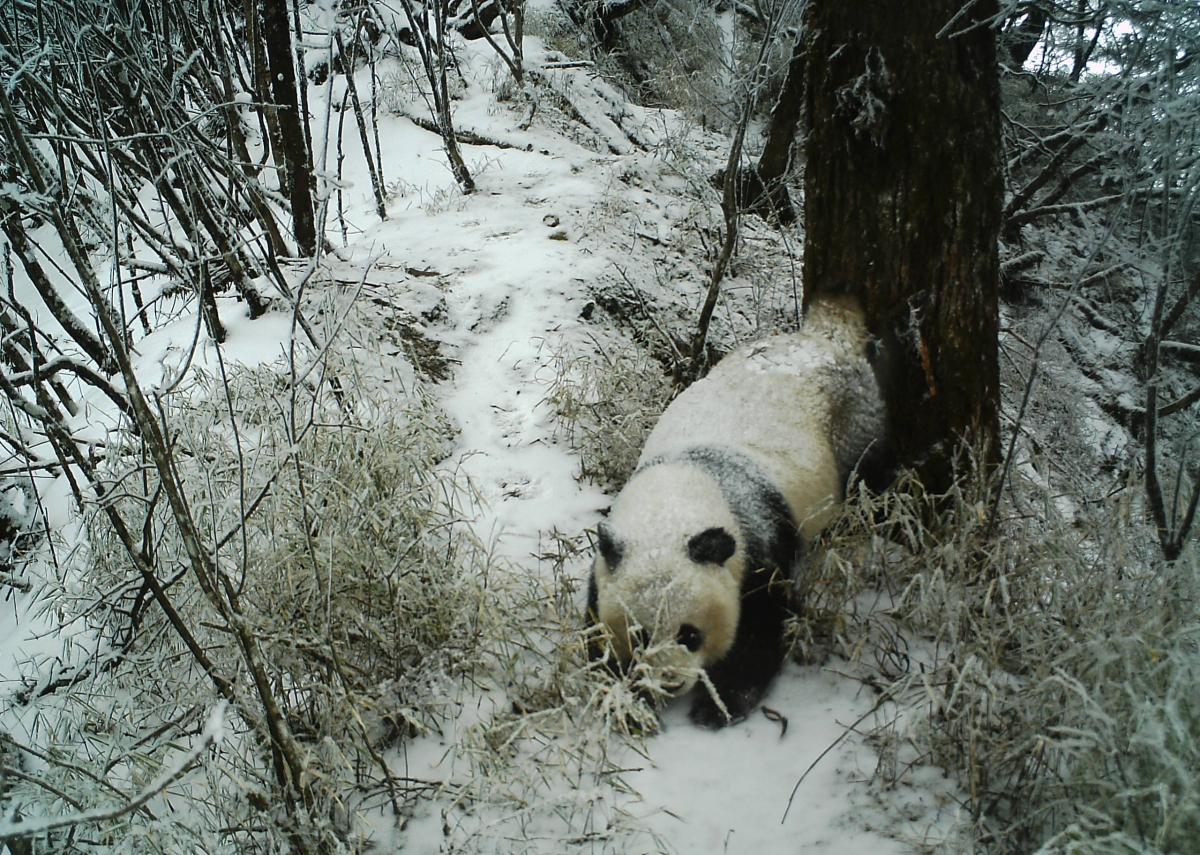A peek at the secret life of pandas
A look at the panda's secretive society that has been closed off in the past.

Reclusive giant pandas fascinate the world, yet precious little is known about how they spend their time in the Chinese bamboo forests. Until now.
A team of Michigan State University (MSU) researchers who have been electronically stalking five pandas in the wild, courtesy of advanced GPS collars, have finished crunching months of data and has published some panda surprises in this month’s Journal of Mammalogy.
“Pandas are such an elusive species and it’s very hard to observe them in wild, so we haven’t had a good picture of where they are from one day to the next,” said Vanessa Hull, a research associate at MSU’s Center for Systems Integration and Sustainability (CSIS). Jindong Zhang, a co-author on the paper and postdoctoral researcher at CSIS continues "This was a great opportunity to get a peek into the panda's secretive society that has been closed off to us in the past."
Hull adds, “Once we got all the data in the computer we could see where they go and map it. It was so fascinating to sit down and watch their whole year unfold before you like a little window into their world.”
The five pandas – three female adults named Pan Pan, Mei Mei and Zhong Zhong, a young female Long Long and a male dubbed Chuan Chuan – were captured, collared and tracked from 2010 to 2012, in the Wolong Nature Reserve in southwest China.
The Chinese government is protective of its endangered pandas and for more than a decade banned putting GPS collars on them. While a handful of studies have tracked some, this is one of the first times technology has been used that provided more detail on the pandas’ movements and how they interact with one another over time.
Pandas not opposed to hanging out together
One of the biggest surprises: The pandas seem to hang together sometimes. Usually renowned for being loners, three in this group – Chuan Chuan, Mei Mei and Long Long -- were found to be in the same part of the forest at the same time – for several weeks in the fall and outside the usual spring mating season.
“We can see it clearly wasn’t just a fluke, we could see they were in the same locations, which we never would have expected for that length of time and at that time of year,” Hull said.
"This might be evidence that pandas are not as solitary as once widely believed," Zhang added.

The male panda moseyed across a bigger range than any of the females, leading researchers to speculate that he spent time checking in on the surrounding females and advertising his presence with scent marking – rubbing stinky glands against trees.
Hull said they learned about a panda’s feeding strategy from this surveillance period. Many animals in the wild have a home range, and within that a core area they frequently return to and defend. Pandas have as many as 20 or 30 core areas, which Hull said might be a reflection of their feeding strategy.
“They pretty much sit down and eat their way out of an area, but then need to move on to the next place,” she said.
It’s been known that pandas follow bamboo – the food that makes up virtually all of their diet. Once they munch through one patch they move to the next, which accounts for a lot of their territory. But what this peek into their world revealed, Hull said, is that the pandas returned to core areas after being gone for long spans of time – up to six months. It suggests the pandas do remember successful dining experiences, and return in anticipation of regrowth. Specific locations may also have other importance for pandas to return to if they are communicating with neighboring pandas at certain vantage points.
Panda counts matter because worries aren't over about where they'll all live
The deeper understanding of how pandas use their space comes at an especially crucial time. The Chinese government recently issued a state of the panda conservation report. The wild panda population, they say, has increased nearly 17 percent to 1,864 pandas in the past decade . But Jianguo “Jack” Liu, the MSU Rachel Carson Chair in sustainability and paper co-author, notes that habitat fragmentation, human impacts and climate change still cast a shadow over the panda’s future.
In addition to Hull, Zhang and Liu, who is CSIS director, “Space use by endangered giant pandas” was written ; Shiqiang Zhou, Jinyan Huang, Rengui Li, Dian Liu ,Yan Huang, and Hemin Zhang of the China Conservation and Research Center for the Giant Panda in Wolong; and Weihua Xu and Zhiyun Ouyang of the State Key Laboratory of Urban and Regional Ecology, in the Chinese Academy of Sciences.
The research was funded in part by the National Science Foundation and NASA.



 Print
Print Email
Email
